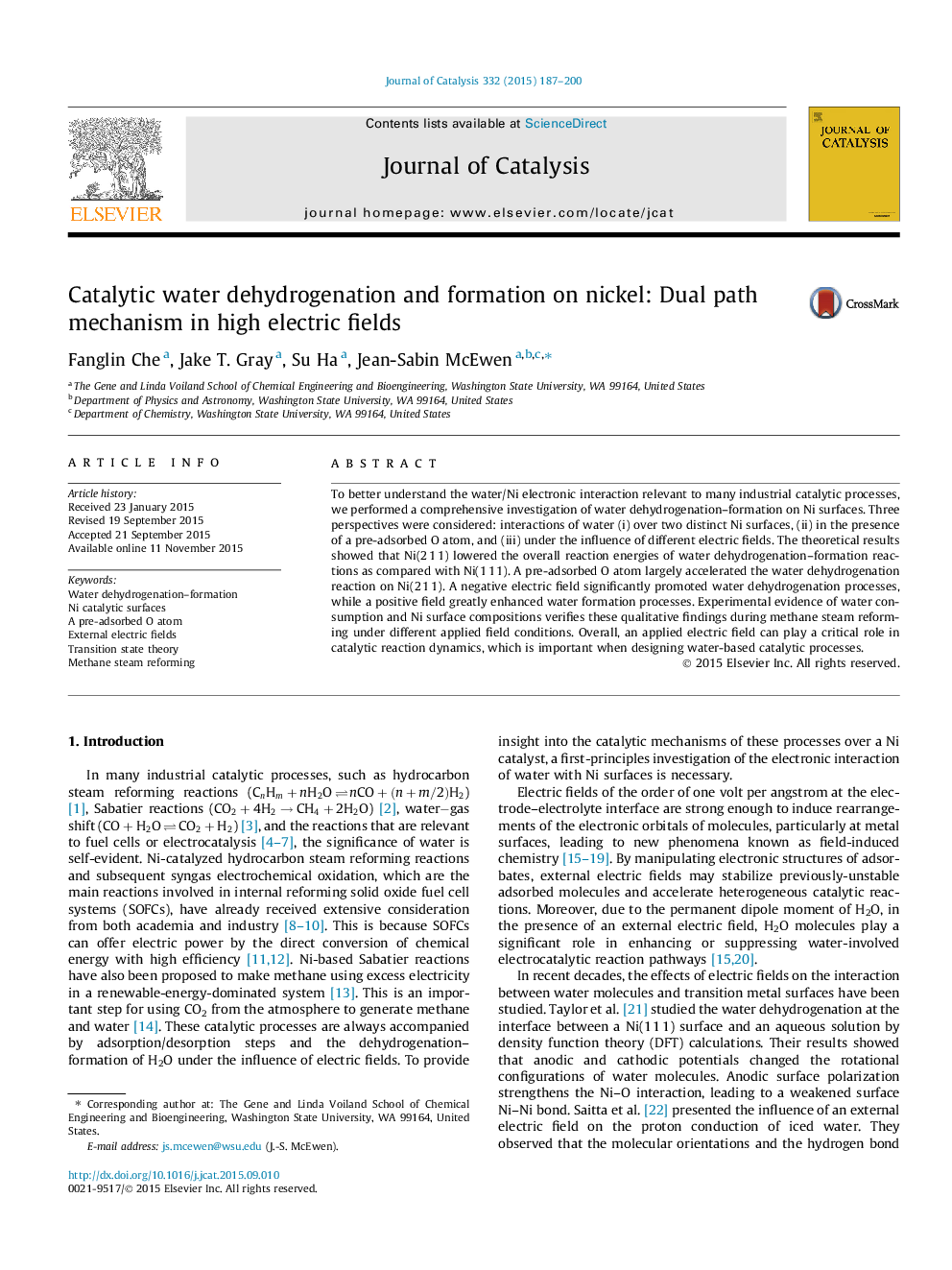| Article ID | Journal | Published Year | Pages | File Type |
|---|---|---|---|---|
| 60737 | Journal of Catalysis | 2015 | 14 Pages |
•Ni(2 1 1) is more active for the partial hydrogenation of oxygen than Ni(1 1 1).•A pre-adsorbed O atom increases the equilibrium constant of H2O →→ OH + H on Ni(2 1 1).•A negative field alters the electron distributions of an adsorbed H2O molecule.•A negative electric field accelerates the water dehydrogenation reaction on Ni.•A positive electric field enhances the water formation reaction on Ni.
To better understand the water/Ni electronic interaction relevant to many industrial catalytic processes, we performed a comprehensive investigation of water dehydrogenation–formation on Ni surfaces. Three perspectives were considered: interactions of water (i) over two distinct Ni surfaces, (ii) in the presence of a pre-adsorbed O atom, and (iii) under the influence of different electric fields. The theoretical results showed that Ni(2 1 1) lowered the overall reaction energies of water dehydrogenation–formation reactions as compared with Ni(1 1 1). A pre-adsorbed O atom largely accelerated the water dehydrogenation reaction on Ni(2 1 1). A negative electric field significantly promoted water dehydrogenation processes, while a positive field greatly enhanced water formation processes. Experimental evidence of water consumption and Ni surface compositions verifies these qualitative findings during methane steam reforming under different applied field conditions. Overall, an applied electric field can play a critical role in catalytic reaction dynamics, which is important when designing water-based catalytic processes.
Graphical abstractFigure optionsDownload full-size imageDownload high-quality image (165 K)Download as PowerPoint slide
